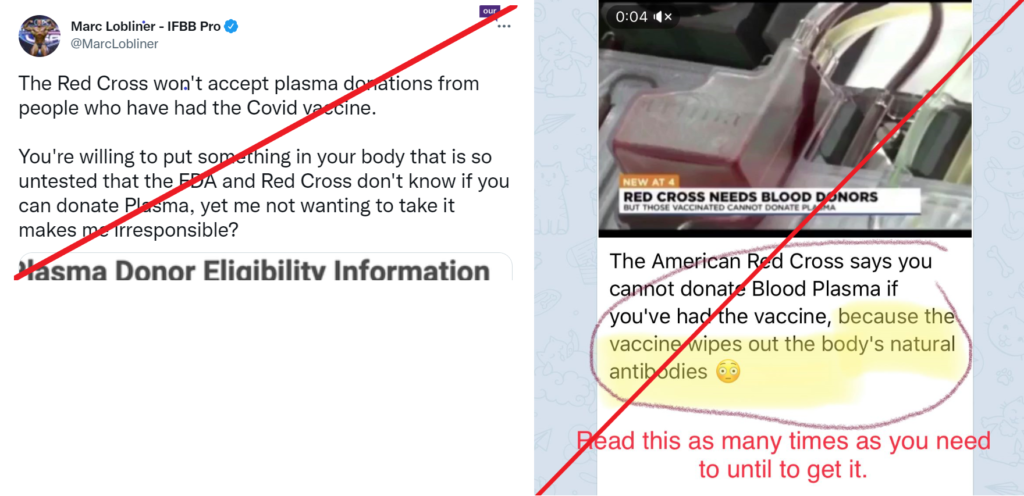By Jason Young
Jonathan Swift wrote, “Falsehood flies, and the Truth comes limping after it.”*
Communicators nowadays know that Swift’s insight remains as relevant as it was in 1710. But the real question is one I hear too often: what do you do about it?
Lies in politics and win-at-all-costs lobbying efforts aren’t surprising. But a nonprofit communicator’s job is especially tough when the organization itself is targeted.
Why?
You may not know who is behind the attack. Unlike in a political campaign, there isn’t a debate stage, which creates a moderated forum and an opportunity to set the record straight. Your job is ongoing, not timebound by Election Day. And without the firm deadline of an election, your organization’s internal rules and processes drive the timeline. All while a viral fire rages.
Consider some examples of non-profits under siege.
Girl Scouts
Just last week, the fact-checking group Lead Stories ruled that the “Girl Scouts Does NOT ‘Support’ Planned Parenthood Or ‘Pro-Abortion Politicians.’” But this claim has circulated for at least 18 years:

A 2019 report from the nonprofit called the cookie program “the largest entrepreneurial program for girls in the world.” And USA Today reported in 2021 that, prior to the pandemic, the Girl Scouts would sell some 200 million boxes of cookies a year, worth some $800M. This false claim strikes right at the heart of the organization’s mission.
To the Girl Scouts’ credit, they have been persistent in setting the record straight. Plus, their site offers a great article, “Teach Your Girl to Ask Smart Questions in a Fake News World,” to empower its members with critical-thinking skills.
Red Cross
Eight months ago, USA Today’s fact-checking unit ruled “The claim that COVID-19 vaccine recipients cannot donate plasma to the Red Cross is FALSE, based on our research.” But the image at left below is a tweet claiming the opposite, and it remains on Twitter today. The image at right is a Facebook post that had 3,000 shares when it was ruled false; the same content is on Instagram.

Today, the American Red Cross’s website says the group “is experiencing the worst blood shortage in over a decade,” potentially delaying surgeries and organ transplants. Plasma, it says, “is used to help patients with severe burns, cancer or other potentially life-threatening conditions.” Like the Girls Scouts, the American Red Cross has helpful content on “How to Stop Rumors and Disinformation.”
What Can Be Done
So what’s the right course when your organization is being vilified? When the mission itself is at stake? I recommend six steps:
- Talk About the Threat of Misinformation Within Your Organization. Your leadership needs to know you’ve taken on this task so they can collaborate with you and report any concerns. I have seen government relations teams, fundraising teams, and volunteer organizers all flounder when misinformation taints their work and stakeholders.
- ***PRO TIP: Get a basic plan in place before the critical moment. Achieve organizational consensus on what to do and what to say, which will save valuable time later on.
- Assess Your Organization and Its Social Media Presence:
- Ask yourself how active you are on those platforms your members use. Some nonprofits don’t have an equally robust presence across platforms. When a viral mess spreads from your comfort zone (say, Facebook or Twitter) to Instagram or TikTok, you’re playing catch up at best.
- It’s a good idea, too, to periodically check what users are searching for on your site.
- ***PRO TIP: Periodically read through the top 500 search queries on your site. See if they all make sense, or if something feels out of place.
- And critically review user-generated comments made to your organization’s social media accounts or on any bulletin board-type platform you offer. This kind of active listening to your members, readers and users has a trove of benefits, too. For one, you may better understand how to be relevant and responsive to visitors’ interests.
- Empower Staff and Volunteers. The paybacks are many:
- One person on the lookout (you) won’t have the same field of view as a volunteer army.
- You help sharpen your closest stakeholders’ critical-thinking skills about the facts in advance. When they spot possible misinformation, it won’t fit what they already know and understand about your non-profit.
- And best of all, they’re able to act, report things to you, and even respond directly.
- ***PRO TIP: Know which staff and volunteers use what platforms. Show them how to flag wrong-headed content, since many platforms allow users to report misinformation, bullying and more. On some forums, as little as one report will remove or sequester suspect content. In other cases, a number of flags triggers review.
- Enable People Who Are Seeking the Facts. Some people, when exposed to misinformation, will seek facts. Supply them. Create content on your site that helps address the matter. (Here is an example from Goodwill. The charity has falsely been accused of lining its owner’s pocket with millions… but nonprofits don’t and can’t have owners.)
- ***PRO TIP: You can even buy keyword search ads to help people who turn to Google or Bing to investigate a claim about you.
- Develop Relationships With Platforms and With Fact-Checkers.
- The specific relationship between your organization and a platform is important. It’s tempting to think in larger terms about how Facebook or YouTube or whoever should operate, but keep focused on the problem you need to solve. Who is your account rep for all the social media buying that your organization invests? If you use a PR or ad agency, who are their contacts? Tell the platform what’s going on, and ask for their partnership in addressing it. The focus is on your concern, not the miasma of the future of internet regulation.
- ***PRO TIP: What is your total spending on the affected platform, across the organization? Or across the federation, if that’s your group’s model? You are an advertiser, a user of the platform, and a nonprofit. It all matters.
- There are many organizations in the fact-checking space. During elections or other big moments, they’re swamped. If you know who they are, you can be more agile. Meta, the parent company of Facebook and Instagram publishes a list of its fact-checking partners here. As of this writing, they have partnerships with AFP, The Associated Press, Check Your Fact, The Dispatch, Factcheck.org, Lead Stories, PolitiFact, Science Feedback, Reuters Fact Check and USA TODAY.
- ***PRO TIP: Once you have prevailed on one fact-check, that is sufficient in order to slow or stop the spread of misinformation. Multiple, duplicate rulings consume your time and the fact-checkers’ time, too.
- Even with though you know who to talk to, you may still have to persist. I have secured fact-checks on the same day I sought them. But one fact-check took more than a hundred days to get addressed. #Persist
- Document and Monitor. When your organization is the victim of a false claim, it can be tempting to report the post first. Instead, I encourage you to document it. Save the weblink, and screengrab the content. Note the number of engagements and track the number over time – say every few hours over the first few days. Once you have documented the source of the false claim, then report it. Beware that a flag can immediately remove the content and make it invisible or inaccessible. But when you can no longer see it, you may be hampered in evaluating whether the same claim had been copied-and-pasted elsewhere.
- ***PRO TIP: Tracking a false post’s engagement level isn’t useful only before you report it to fact-checkers, but after. It can help you to see if the fact-check is working. Tracking engagements has shown me when a false claim is massively viral. It has also shown me when that post has flatlined – in other words, no longer attracting new likes and shares. And I have also discovered cases where the content is copied-and-pasted elsewhere, often an attempt to evade the fact-check. Report these instances to the fact-checker and to the platform. Also check out tools to enable and automate monitoring – great social listening tools include NewsWhip, Talkwalker and Brandwatch.
Conclusion
My work in recent years, at AARP, has given me and my team a great opportunity to be at the forefront of stopping proliferation of false claims on social media. I’ve seen firsthand how disinformation and misinformation prey on users new to those platforms. Worst of all, I’ve witnessed how false claims can puts those with financial resources, like retirement savings, at risk. And at the same time, imperil the work of charities and social mission organizations.
My team and I have had the good fortune of prevailing on every fact-check filed with Facebook fact-checkers. I hope my tips here are helpful and that your results are just the same. Nonprofits’ missions are vital work, and that’s the truth.
*A similar quote has been attributed to Mark Twain, nine years after his death in 1910. As this is a blog post on misinformation, let’s not get that nonsense globetrotting again while the truth puts on its shoes. Or gets its boots on. Or laces them up.


